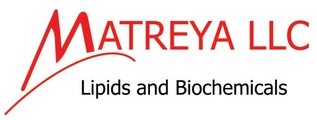服务热线
021-60498804
产品中心
/ Products Classification 点击展开+
| Cat. Number | 2053 |
| Chemical Name | 2053 N-己酰基 - 生物素 - 单唾液酸神经节苷脂GM1 N-Hexanoyl-biotin-monosialoganglioside GM1 |
| Mol. Formula | C71H122N6O33S |
| Mol. Weight | 1620 |
| Qty 1 |
500µg |
| Appearance | solid |
| Application Notes | 98+%,TLC; identity confirmed by MS |
| Synonym | Biotin-C6:0-GM1 |
| Solubility | chloroform/methanol/water, 2:1:0.1 |
| Storage condition | -20℃ |
| References | Application Notes: This ganglioside GM1 analogue contains a biotin unit attached to the amine of the sphingosine moiety via a hexanoic acid linker and is ideal for use in ganglioside studies. The biotin structure allows for attachment of the ganglioside to streptavidin and avidin substrates making it extremely useful for binding to substrates and for toxin detection.1 Gangliosides are acidic glycosphingolipids containing one or more sialic acids that generally form lipid rafts in the outer leaflet of the cell plasma membrane, especially in neuronal cells in the central nervous system.2,3 They participate in many cellular activities including proliferation, differentiation, adhesion, signal transduction, cell-to-cell interactions, tumorigenesis, and metastasis.4 The accumulation of gangliosides has been linked to several diseases including Tay-Sachs and Sandhoff disease while an autoimmune response against gangliosides can lead to Guillain-Barre syndrome. Gangliosides act as receptors for various toxins and bacteria, accumulate in various tumors, and aid in many neuronal functions. They are therefore very important in therapeutic processes and have warranted much research. GM1 stimulates neuronal sprouting and enhances the action of nerve growth factor (NGF) by directly and tightly associating with Trk, the high-affinity tyrosine kinase-type receptor for NGF. GM1 has also been identified as the specific cell surface receptor for cholera toxin making it an important target for therapeutic interventions.5
References: |





